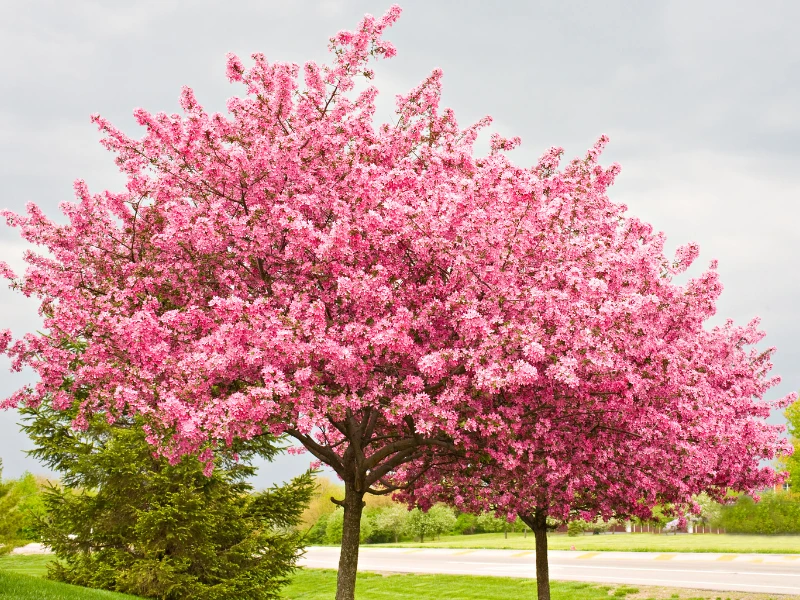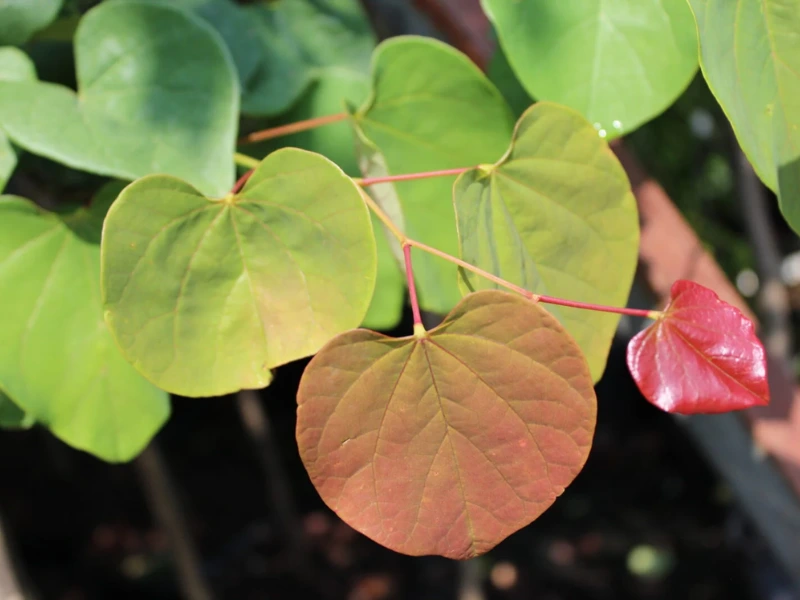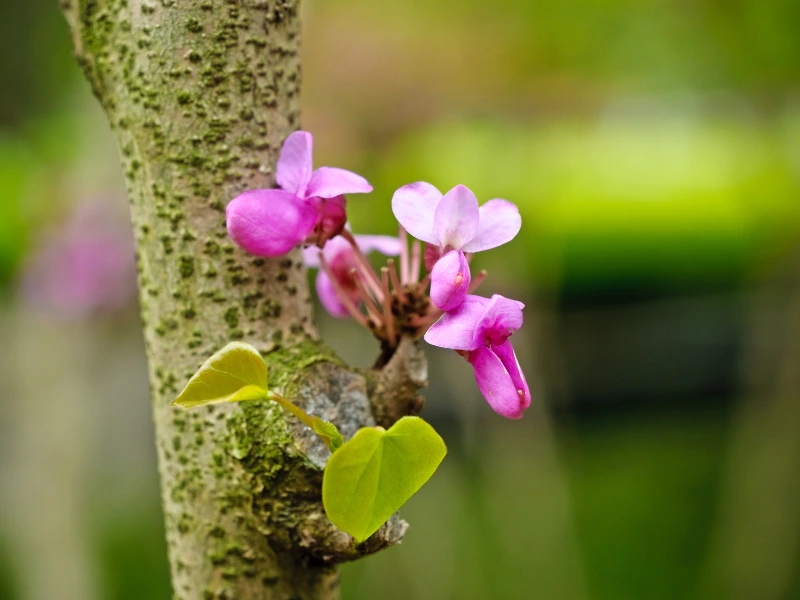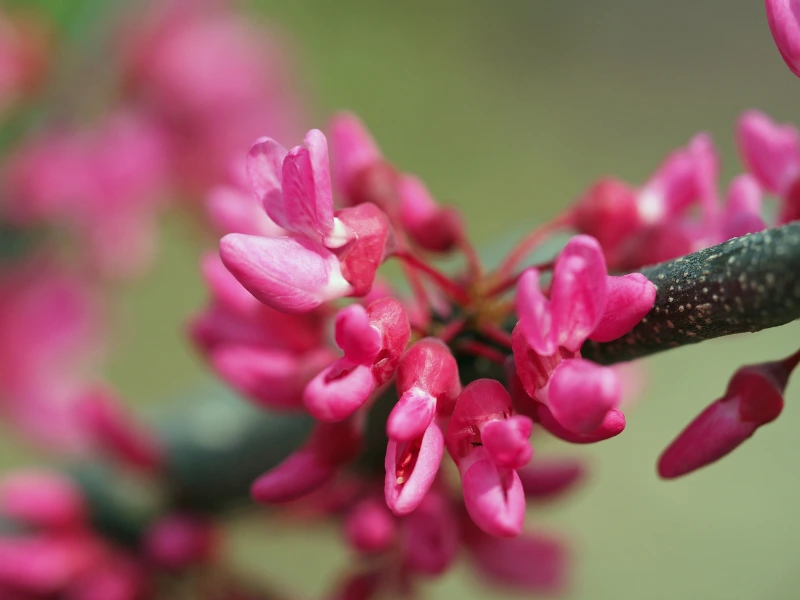Plant Care Expert Guides
Now Is the Best Time to Plant Redbud Trees (And 5 Tips for Healthy Growth)
Spectacular spring blooms, heart-shaped leaves, and adaptable growing habits make the Eastern Redbud, Cercis canadensis, a beloved ornamental tree for American landscapes. These native beauties burst into vibrant pink-purple flowers in early spring before their leaves appear, creating a striking display against the still-dormant garden. Eastern redbud tree care is straightforward, making them perfect for both novice and experienced gardeners.
This guide offers everything you need to know about these eye-catching trees including when and how to plant and showcase them for years of springtime enjoyment.
When to Plant Redbud Trees

Redbuds are hardy in USDA growing zones 4 to 9. Trees perform best when planted in early fall from September through October, extending into November in southern climates.
Set them out six to eight weeks at least 6 to 8 weeks before the first frost in your hardiness zone for good root establishment before the ground freezes. Autumn planting allows redbuds to settle in over winter with a better chance of flowering abundantly the following spring.
Redbuds also can be planted in early spring as soon as the soil can be worked. If you plant Redbud Trees in spring, do so after the last frost to allow the tree to settle in and grow during the warmer months. However, fall-planted trees typically develop stronger root systems and show less transplant stress during the first summer.
Want more gardening tips? Sign up for our free gardening newsletter for our best-growing tips, troubleshooting hacks, and more!
How to Plant Redbud Trees

Redbuds are available as container-grown plants or balled and burlapped specimens. When transplanting, follow these directions for successful establishment:
-
Choose a location that receives at least 4 hours of sun daily, with filtered shade in hot afternoon hours for the healthiest growth and most abundant blooms.
-
Prepare the planting area. Redbuds prefer slightly acidic to neutral soil with good drainage. Amend heavy clay soil if necessary.
-
Dig a planting hole twice as wide as the root ball but no deeper than the height of the container or root ball.
-
Remove the tree from its container or remove the burlap and wire basket if present.
-
Place the tree in the hole with the top of the root ball level with the surrounding soil surface. Never plant deeper than the original growing depth.
-
Backfill with native soil, avoiding amendments in the planting hole which can discourage roots from growing outward.
-
Water thoroughly to settle the soil and eliminate air pockets.
-
Apply 2-3 inches of mulch in a circle around the tree, keeping it away from the trunk.
How to Care for Redbud Trees
With minimal care, redbuds reward gardeners with a spectacular early spring display. Water newly planted trees deeply once a week during the first growing season. Establish a wide watering zone to encourage broad root development.
Feed lightly in spring with a balanced, slow-release fertilizer. Prune only to remove dead or crossing branches after flowering completes, as redbuds bloom on old wood.
5 Companion Plants for Redbuds
-
Dogwood: Flowering dogwoods bloom slightly later than redbuds, extending the spring show with their white or pink bracts against the emerging green leaves of your redbud.
-
Virginia Bluebells: These native woodland perennials produce blue bell-shaped flowers that complement the pink-purple of redbud blossoms perfectly in spring.
-
Hostas: Their lush foliage emerges as redbud flowers fade, providing season-long interest beneath the dappled shade of the tree.
-
Ferns: Delicate fern fronds unfurling beneath a flowering redbud create a woodland garden feel that highlights the tree’s natural elegance.
-
Daffodils: Early-blooming varieties flower alongside redbuds for a cheerful spring combination that signals winter’s end.
5 Growing Tips You Need to Know

-
Choose the right cultivar for your space. Standard redbuds reach 20-30 feet tall, but compact varieties like ‘Rising Sun’ and ‘Forest Pansy’ stay smaller.
-
Allow adequate spacing for mature width, typically 25-35 feet for standard varieties. Crowding reduces air circulation and can lead to disease problems.
-
Protect young trees from lawn equipment damage by maintaining a mulched area around the trunk.
-
Avoid excessive pruning as redbuds don’t respond well to heavy cutting. Their natural form is part of their charm.
-
Monitor for canker diseases, especially on stressed trees. Promptly remove affected branches to prevent spread, making cuts into healthy wood.
Proper eastern redbud tree care includes these preventative measures to ensure your tree remains healthy and beautiful for many years.
If you’re looking for the perfect plants for your landscape, try using the Easy Plant Finder tool, where you can find plants that fit your needs and growing conditions.
Frequently Asked Questions
How fast do redbud trees grow? Redbuds are moderate growers, typically adding 1-2 feet per year until reaching mature height. They generally reach flowering size within 4-5 years of planting.
Do redbud trees have invasive roots? Redbud trees develop a moderate root system that is not considered invasive. They can be planted 8-10 feet from foundations without concern for structural damage.
Are redbud trees messy? Redbuds produce minimal mess compared to many flowering trees. Spent flowers fade and drop without creating significant litter, and seed pods are small and not typically problematic.
What is the best time of year to plant a Redbud tree?
The best time to plant a Redbud tree is in early spring or fall. Ensure that you plant at least 6-8 weeks before the first frost in the fall.
How long does it take for a Redbud tree to mature?
A Redbud tree typically takes 5 to 10 years to reach full maturity and starts producing a large number of blooms. However, it will begin flowering in its third to fourth year.
How big do Redbud trees get?
Redbud trees can grow up to 20-30 feet tall and 25 feet wide, making them perfect for medium to large landscapes.
With the right care and planting techniques, your Redbud tree can thrive, providing years of beauty with its brilliant spring blossoms. Get ready to enjoy the stunning floral display and unique foliage that this beloved tree brings to any landscape.

